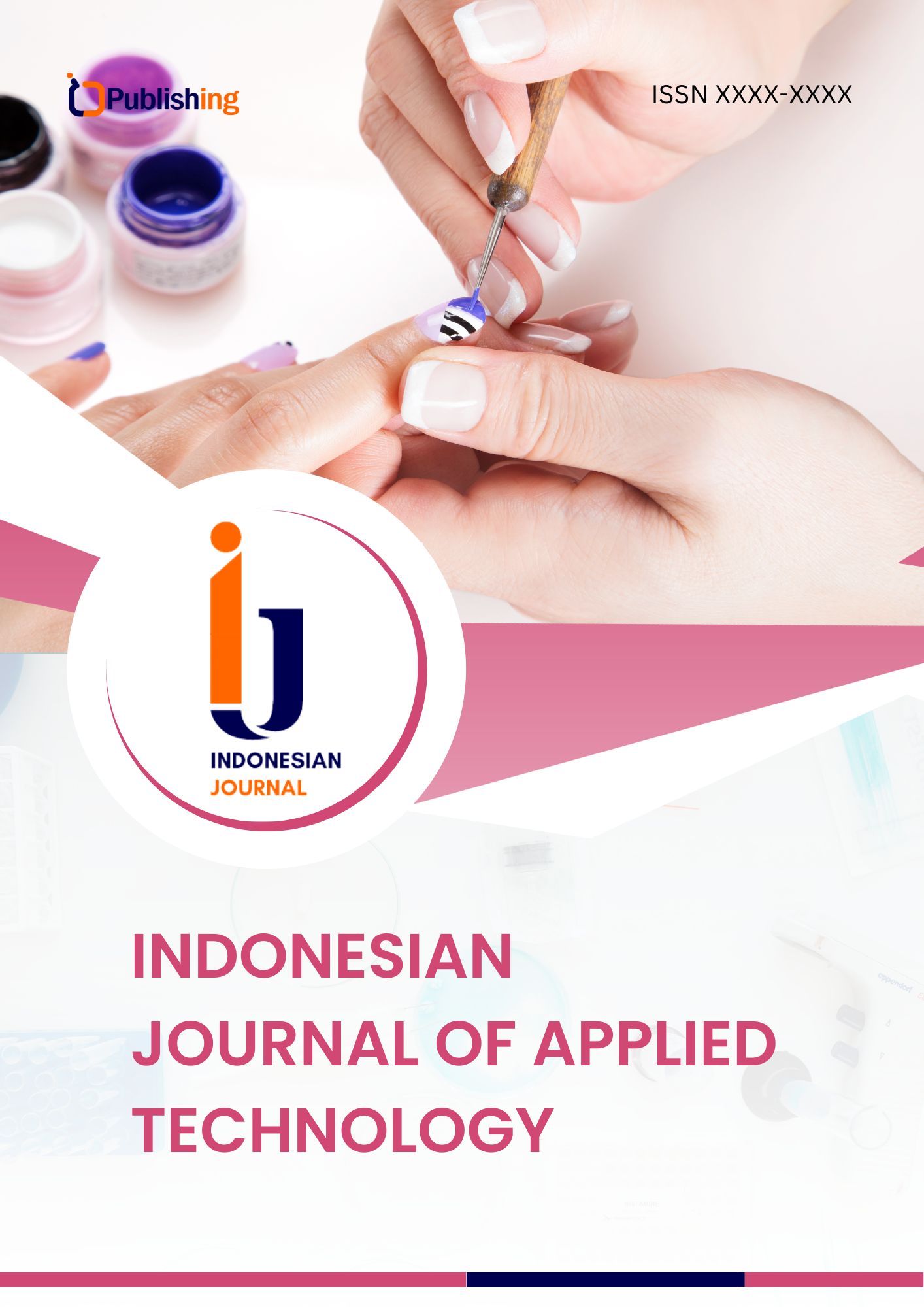Klasifikasi Hate Speech dan Emosi Dalam Teks Berbahasa Indonesia Pada Pengguna Twitter Menggunakan Metode Naïve Bayes Classifier
DOI:
https://doi.org/10.47134/ijat.v1i3.3105Keywords:
Klasifikasi, Ujaran Kebencian, Emosi, Naïve Bayes, TwitterAbstract
Ujaran kebencian merupakan salah satu bentuk ekspresi yang menghasut, menyebarkan, membenarkan, atau mendorong kebencian, diksriminasi serta kekerasan atas individu dan kelompok sebab berbagai alasan. Hate speech biasanya ditemukan pada sosial media yang terhubung dengan internet, salah satunya pada penelitian ini melalui sosial media twitter dengan menggunakan metode Naïve Bayes Classifier. Dataset yang digunakan pada penelitian ini berjumlah 1800 data berlabel bukan ujaran kebencian dan 2250 data berlabel ujaran kebencian dengan perbandinghan 60% data latih dan 40% data uji. Hasil evaluasi data uji dengan confusion matrix diperoleh pengukuran matrix mean accuracy for hate speech classification 0,89 dan matrix mean accuracy for emotion classification 0,59. Berdasarkan hasil yang didapat tersebut dapat diambil kesimpulan bahwa untuk melakukan klasifikasi hate speech dan emosi pada Twitter menggunakan Naïve Bayes hasil paling bagus dengan Confusion Matrix tanpa melakukan seleksi fitur Information Gain.
References
Abro, S., Shaikh, S., Khand, Z. H., Zafar, A., & ... (2020). Automatic hate speech detection using machine learning: A comparative study. International …. https://pdfs.semanticscholar.org/0445/07a2f4d0030c05434eceb0230c40f868804d.pdf DOI: https://doi.org/10.14569/IJACSA.2020.0110861
Afif, Much. F. A., Nurhamidah, Y., & Mashuri, M. F. (2021). Kematangan emosi dalam perilaku ujaran kebencian pada kebijakan politik. Cognicia, 9(1), 25–30. https://doi.org/10.22219/cognicia.v9i1.14234 DOI: https://doi.org/10.22219/cognicia.v9i1.14234
Ahmad Gozali, H., & Alfan Rosid, M. (2020). Classification of Student Complaints with Naive Bayes and Literary Methods Klasifikasi Keluhan Mahasiswa dengan Metode Naive Bayes dan Sastrawi. Network, and Computer Science) |, 3(1), 22–26. DOI: https://doi.org/10.21070/joincs.v3i0.711
Ahmad Wildan Attabi, Lailil Muflikhah, & Mochammad Ali Fauzi. (2018). Penerapan Analisis Sentimen untuk Menilai Suatu Produk pada Twitter Berbahasa Indonesia dengan Metode Naïve Bayes Classifier dan Information Gain. Jurnal Pengembangan Teknologi Informasi Dan Ilmu Komputer, 2(11), 4548–4554.
Al Baqi, S. (2015). Ekspresi Emosi Marah. Buletin Psikologi, 23(1), 22. https://doi.org/10.22146/bpsi.10574 DOI: https://doi.org/10.22146/bpsi.10574
Alkomah, F., & Ma, X. (2022). A literature review of textual hate speech detection methods and datasets. Information. https://www.mdpi.com/2078-2489/13/6/273 DOI: https://doi.org/10.3390/info13060273
Anderson, L., & Barnes, M. (2022). Hate speech. plato.stanford.edu. https://plato.stanford.edu/ENTRIES/hate-speech/
Carlson, C. R. (2021). Hate speech. books.google.com. https://books.google.com/books?
hl=en&lr=&id=dDoiEAAAQBAJ&oi=fnd&pg=PA1&dq=hate+speech&ots=fmclhAYLhB&sig=GxQemAMypPvYukVYNRaxHUdWOmU
Chhabra, A., & Vishwakarma, D. K. (2023). A literature survey on multimodal and multilingual automatic hate speech identification. Multimedia Systems. https://doi.org/10.1007/s00530-023-01051-8 DOI: https://doi.org/10.1007/s00530-023-01051-8
Chiril, P., Pamungkas, E. W., Benamara, F., Moriceau, V., & ... (2022). Emotionally informed hate speech detection: a multi-target perspective. Cognitive …. https://doi.org/10.1007/s12559-021-09862-5 DOI: https://doi.org/10.1007/s12559-021-09862-5
Deolika, A., Kusrini, K., & Luthfi, E. T. (2019). Analisis Pembobotan Kata Pada Klasifikasi Text Mining. Jurnal Teknologi Informasi, 3(2), 179. https://doi.org/10.36294/jurti.v3i2.1077 DOI: https://doi.org/10.36294/jurti.v3i2.1077
Döring, N., & Mohseni, M. R. (2020). Gendered hate speech in YouTube and YouNow comments: Results of two content analyses. SCM Studies in Communication and …. https://doi.org/10.5771/2192-4007-2020-1-62 DOI: https://doi.org/10.5771/2192-4007-2020-1-62
Dwitama, A. P. J. (2021). Deteksi Ujaran Kebencian Pada Twitter Bahasa Indonesia Menggunakan Machine Learning: Reviu Literatur. Jurnal Sains, Nalar, Dan Aplikasi Teknologi Informasi, 1(1), 31–39. https://doi.org/10.20885/snati.v1i1.5 DOI: https://doi.org/10.20885/snati.v1i1.5
Fanesya, F., Wihandika, R. C., & Indriati. (2019). Deteksi Emosi pada Twitter Menggunakan Metode Naive Bayes dan Kombinasi Fitur. Jurnal Pengembangan Teknologi Informasi Dan Ilmu Komputer, 3(7), 3.
Florio, K., Basile, V., Polignano, M., Basile, P., & Patti, V. (2020). Time of your hate: The challenge of time in hate speech detection on social media. Applied Sciences. https://www.mdpi.com/2076-3417/10/12/4180 DOI: https://doi.org/10.3390/app10124180
Ghassani Saskia, T. (2021). Klasifikasi Hate Speech Dan Abusive Language Pada Twitter Bahasa Indonesia Dengan Metode Naive Bayes Classifier.
Gould, J. B. (2019). Speak no evil: The triumph of hate speech regulation. degruyter.com. https://doi.org/10.7208/9780226305134
Hadna, N. M. S., Santosa, P. I., & Winarno, W. W. (2016). Studi Literatur Tentang Perbandingan Metode Untuk Proses Analisis Sentimen Di Twitter. Seminar Nasional Teknologi Informasi Dan Komunikasi, 2016(March), 57–64.
Hakiem, M., Fauzi, M. A., & Indriati. (2019). Klasifikasi Ujaran Kebencian pada Twitter Menggunakan Metode Naïve Bayes Berbasis N-Gram Dengan Seleksi Fitur Information Gain. Jurnal Pengembangan Teknologi Informasi Dan Ilmu Komputer, 3(3), 2443–2451.
Hidayat, T. E., & Rosid, A. (2020). Analysis of Community Sentiments Regarding Plans to Relocate National Capital Using the Naïve Bayes Method Analisa Sentimen Masyarakat Tentang Rencana Pemindahan Ibukota Negara Dengan Metode Naïve Bayes. Network, and Computer Science) |, 3(2), 43–49. DOI: https://doi.org/10.21070/joincs.v4i0.712
Khan, M. M., Shahzad, K., & Malik, M. K. (2021). Hate speech detection in roman urdu. ACM Transactions on Asian and Low …. https://doi.org/10.1145/3414524 DOI: https://doi.org/10.1145/3414524
Kovács, G., Alonso, P., & Saini, R. (2021). Challenges of hate speech detection in social media: Data scarcity, and leveraging external resources. SN Computer Science. https://doi.org/10.1007/s42979-021-00457-3 DOI: https://doi.org/10.1007/s42979-021-00457-3
Kumari, A. (2014). Study on Naive Bayesian Classifier and its relation to Information Gain. International Journal on Recent and Innovation Trends in Computing and Communication, 2(3), 601–602.
Liu, I., & Sari, Y. A. (2019). Klasifikasi Hate Speech Berbahasa Indonesia di Twitter Menggunakan Naive Bayes dan Seleksi Fitur Information Gain dengan Normalisasi Kata. Jurnal Pengembangan Teknologi Informasi Dan Ilmu Komputer, 3(5), 4914–4922.
Martins, B., Sheppes, G., Gross, J. J., & Mather, M. (2018). Age Differences in Emotion Regulation Choice: Older Adults Use Distraction Less Than Younger Adults in High-Intensity Positive Contexts. Journals of Gerontology - Series B Psychological Sciences and Social Sciences, 73(4), 603–611. https://doi.org/10.1093/geronb/gbw028 DOI: https://doi.org/10.1093/geronb/gbw028
Mozafari, M., Farahbakhsh, R., & Crespi, N. (2020). Hate speech detection and racial bias mitigation in social media based on BERT model. PloS One. https://journals.plos.org/plosone/article?id=10.1371/journal.pone.0237861 DOI: https://doi.org/10.1371/journal.pone.0237861
Perifanos, K., & Goutsos, D. (2021). Multimodal hate speech detection in greek social media. Multimodal Technologies and Interaction. https://www.mdpi.com/2414-4088/5/7/34 DOI: https://doi.org/10.3390/mti5070034
Pettersson, K. (2019). “Freedom of speech requires actions”: Exploring the discourse of politicians convicted of hate‐speech against Muslims. European Journal of Social Psychology. https://doi.org/10.1002/ejsp.2577 DOI: https://doi.org/10.1002/ejsp.2577
Socrates, I. G. A., Akbar, A. L., Akbar, M. S., Arifin, A. Z., & Herumurti, D. (2016). Optimasi Naive Bayes Dengan Pemilihan Fitur Dan Pembobotan Gain Ratio. Lontar Komputer : Jurnal Ilmiah Teknologi Informasi, 7(1), 22. https://doi.org/10.24843/lkjiti.2016.v07.i01.p03 DOI: https://doi.org/10.24843/LKJITI.2016.v07.i01.p03
Downloads
Published
How to Cite
Issue
Section
License
Copyright (c) 2024 Chandra Hary Pratama, Yulian Findawati

This work is licensed under a Creative Commons Attribution 4.0 International License.










